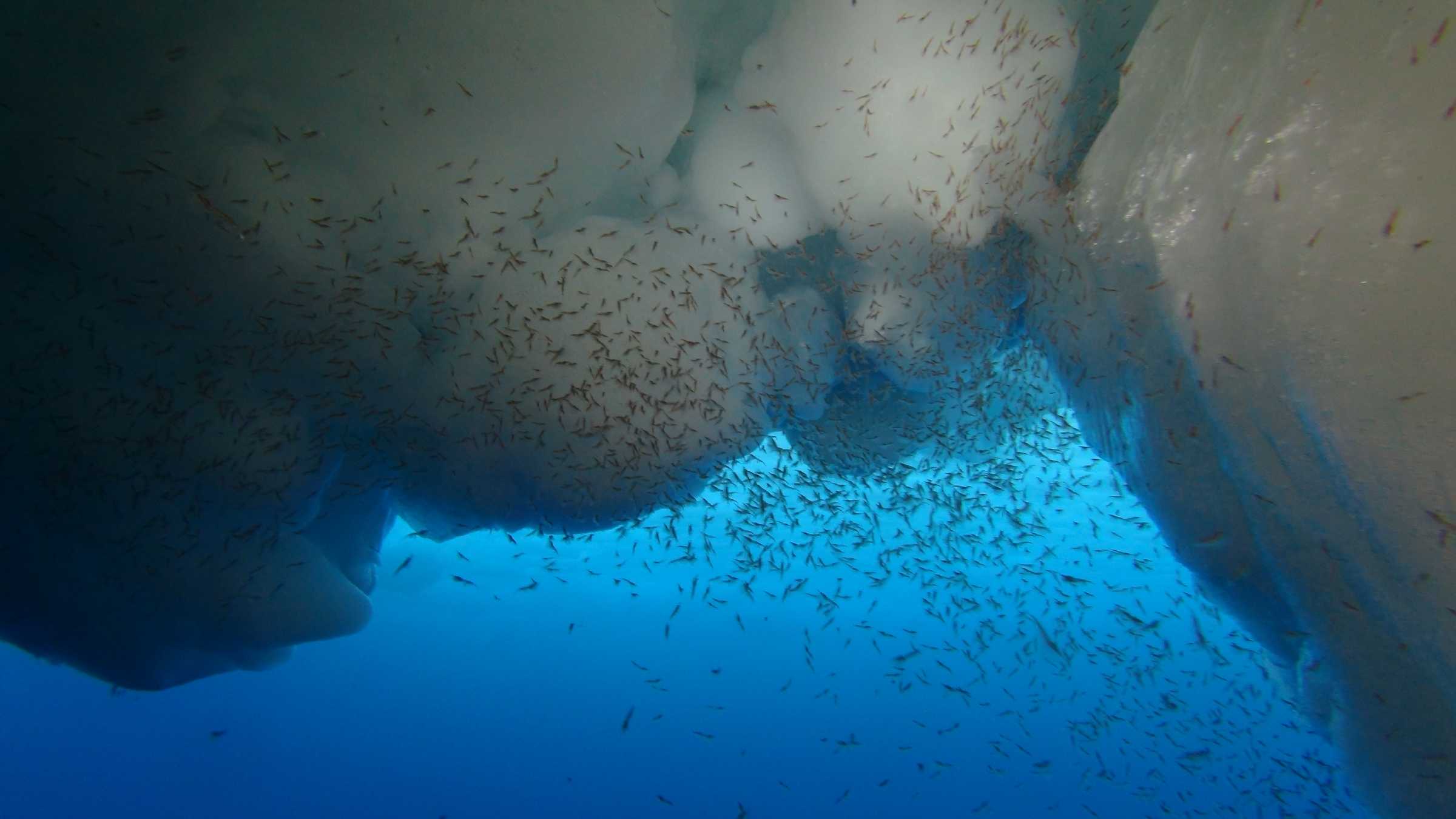The Southern Ocean is one of the most important oceanic regions for uptake and storage of carbon dioxide (CO2) from the atmosphere. This uptake of CO2 is driven by faecal pellets produced by Antarctic krill (Euphausia superba) and salps (Salpa thompsoni), krill and salp poo, the most important macrozooplankton grazers in the Southern Ocean. Even though krill and salp faecal pellets are only millimetre-large, they are carbon-rich, very numerous and sink fast, which all helps in transporting carbon from the surface ocean to the deep-water layers and the sea floor where carbon can be stored for thousands to millions of years.
A surprising find in the Southern Ocean
During the past decades, we have observed climate change with warming water temperatures in large areas of the Southern Ocean. This warming has already affected Antarctic krill populations in the Atlantic sector of the Southern Ocean and forced them to move to colder areas further south. At the same time, the warming has allowed salps to expand into areas that were previously dominated by krill. As a result, we have observed a long-term shift from krill to salps in large areas of the Southern Ocean.
Since salp faecal pellets are larger, more carbon-rich, and sink faster than krill faecal pellets, we expected that a shift from krill to salps would increase the export of carbon to the deep ocean and that the Southern Ocean therefore would store carbon more efficiently, but to our surprise it turned out differently.
These results completely change our understanding of how a shift from krill to salps will affect the role of the Southern Ocean in carbon uptake and storage.
Bettina Meyer, Marine Biologist
Implications for mitigating climate change and CO2 uptake
When we went to the Southern Ocean to study how a shift from krill to salps would affect the export of carbon, we found that while krill pellets are efficiently exported out of the euphotic zone, salp pellets were not. Instead, only a small fraction of the salp pellets sank to depths below 200 m and most of the salp pellets were recycled and eaten in the upper 200 meters of the water column. On the Research Ice breaker Polarstern we used a wide set of different methods to study the in-situ biomass of krill and salps, their faecal pellet production, as well as the sinking speed, carbon content and degradation of faecal pellets. Although we found that salp pellets sink faster than krill pellets, only 20% of the salp pellets that were produced in the surface ocean were found in sediment traps that were deployed at 300 meters. 70% of all the krill pellets that were produced in the surface ocean sank to 300 m depth, despite the fact that they sank much slower than salp faecal pellets.
These results completely change our understanding of how a shift from krill to salps will affect the role of the Southern Ocean in carbon uptake and storage. This has huge implications for how the Southern Ocean will mitigate climate change and CO2 uptake in the future.


Stressed krill populations
This means that if salps continue to increase their distribution and krill is forced to move further southward as the Southern Ocean is warming, the Southern Ocean will become a less efficient carbon sink in the future. However, it is not only increasing temperatures that are forcing krill to move further south. On the expedition we further found the first glimpses of how salps directly compete with krill for the same food.
This was a surprise, because a selective feeding behaviour was previously known for krill, while salps were thought to be indiscriminate ‘vacuum cleaners’.
Since salps can reproduce extremely fast, they can double their numbers in a matter of days and pose further risk to krill populations that are already stressed by warming temperatures.
Nora-Charlotte Pauli, Morten Iversen and Bettina Meyer
Nora-Charlotte Pauli, Clara Flintrop, Christian Konrad, Evgeny Pakhomov, Steffen Swoboda, Florian Koch, Xin-Liang Wang, Ji-Chang Zhang, Andrew Brierley, Matteo Bernasconi, Bettina Meyer, Morten Iversen: Krill and salp faecal pellets contribute equally to the carbon flux at the Antarctic Peninsula. (2021) Nature Communications, DOI 10.1038/s41467-021-27436-9
Nora-Charlotte Pauli, Katja Metfies, Evgeny Pakhomov, Stefan Neuhaus, Martin Graeve, Philip Wenta, Clara Flintrop, Thomas Badewien, Morten Iversen, Bettina Meyer. Selective feeding in Southern Ocean key grazers – diet composition of krill and salps. (2021) Communications Biology: 4, 1061, DOI 10.1038/s42003-021-02581-5
